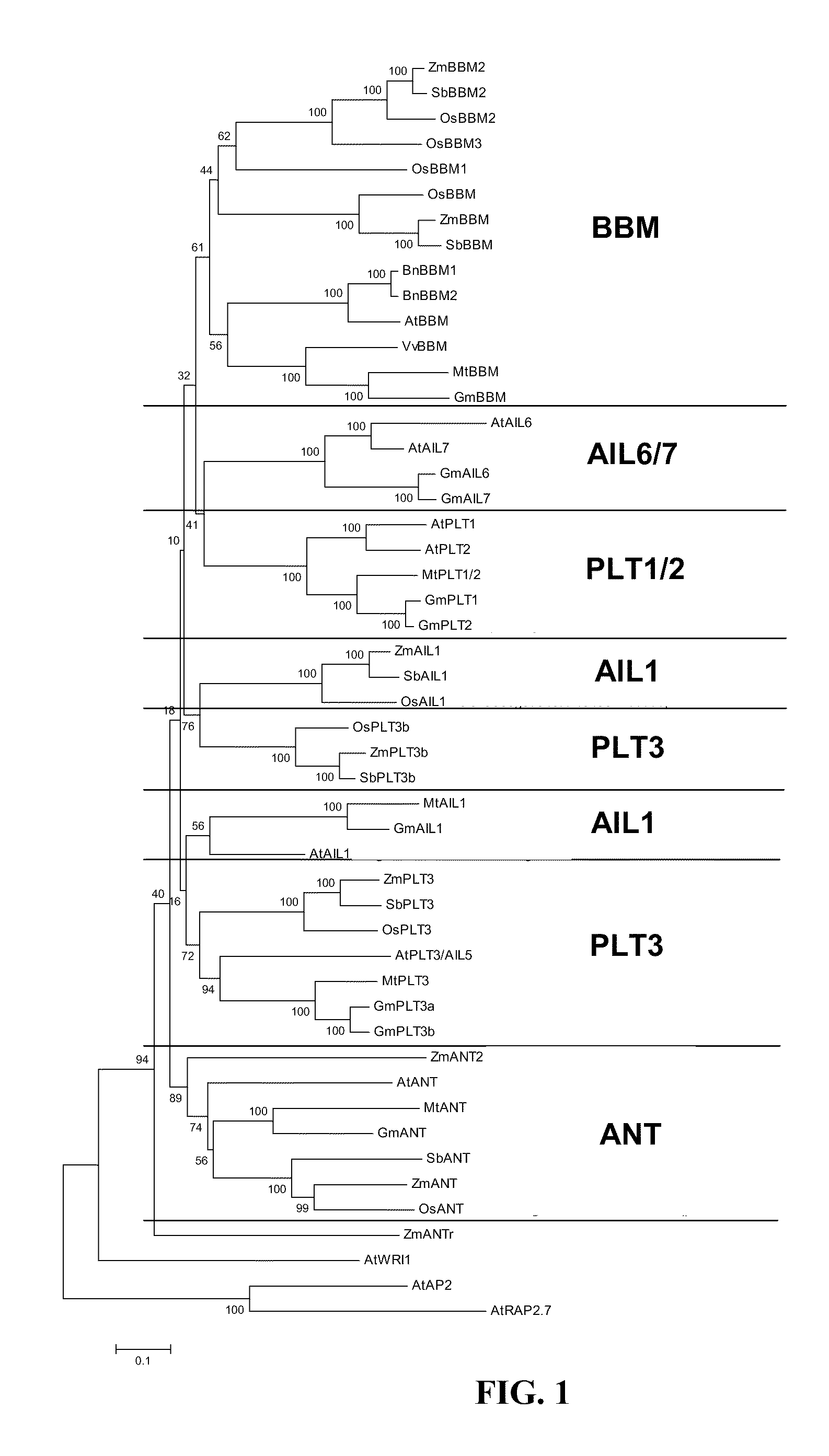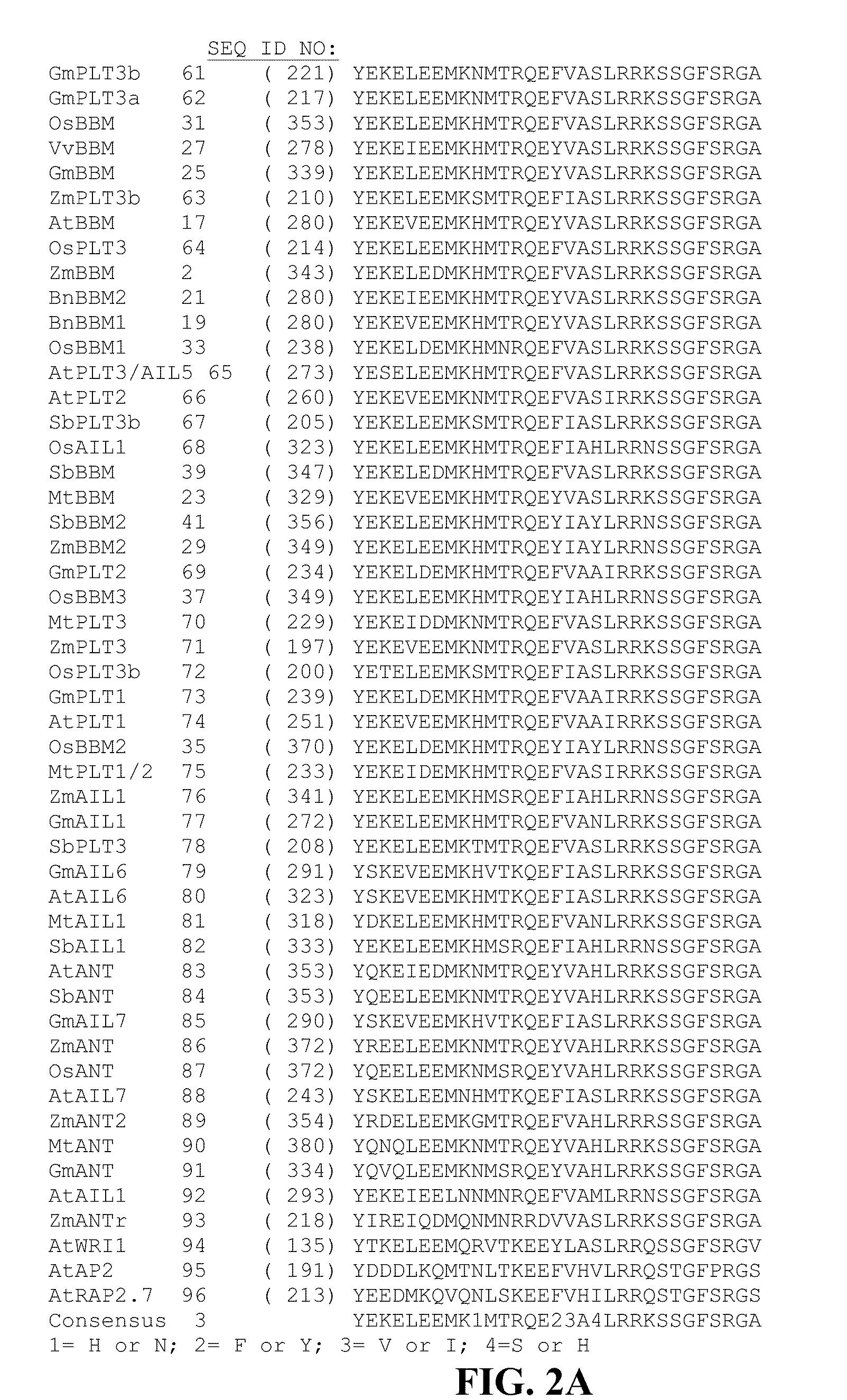Methods and compositions for targeted polynucleotide modification
a polynucleotide and polynucleotide technology, applied in the field of molecular biology, can solve the problems of reducing agronomic efficiency, reducing agronomic efficiency, and introducing dna randomly into the genome of a host cell can be lethal, and achieve the effect of reducing or eliminating expression
- Summary
- Abstract
- Description
- Claims
- Application Information
AI Technical Summary
Benefits of technology
Problems solved by technology
Method used
Image
Examples
example 1
Vector Construction
[0165]Maize recombination targets (RTL) were created using Agrobacterium transformation of immature maize embryos (Ishida et al. (1996) Nat Biotechnol 14:745-750). The LBA4404 Agrobacterium strain was used, which carried a specialized binary T-DNA plasmid system (Komari et al. (1996) Plant J 10:165-174) developed for high efficiency maize transformation. The binary Agrobacterium plasmid PHP21199 (similar to pSB124, Komari et al. (1996)), which is a T-DNA containing derivative of plasmid PHP10523 (similar to pSB1, Komari et al. (1996)) was constructed as follows. Visual and selectable marker genes were built into the T-DNA region of the intermediate construct, PHP21198 (similar to pSB12, Komari et al. (1996)), and then introduced into Agrobacterium to create the co-integrated binary plasmid, PHP21199. The selectable marker expression cassette in the PHP21199 plasmid consisted of the maize ubiquitin) (UBI) promoter (Christensen & Quail (1996) Transgenic Res 5:213-21...
example 2
Recombinant Target Lines (RTL)
[0167]Zea mays immature embryos were transformed by a modified Agrobacterium-mediated transformation procedure (Djukanovic et al. (2006) Plant Biotechnol J 4:345-357) to introduce the T-DNA from PHP21199. Briefly, 10-12 days after pollination (DAP) embryos were dissected from sterile kernels and placed into liquid medium. After embryo collection, the medium was replaced with 1 ml of Agrobacterium suspension at a concentration of 0.35-0.45 OD at 550 nm, wherein the Agrobacterium comprised the T-DNA. After a five minute incubation at room temperature, the embryo suspension was poured onto a media plate. Embryos were incubated in the dark for 3 days at 20° C., followed by a 4 day incubation in the dark at 28° C. and a subsequent transfer onto new media plates containing 0.1778 mg / L glyphosate and 100 mg / L carbenicillin. Embryos were subcultured every three weeks until transgenic events were identified. Regeneration was induced by transferring small sectors...
example 3
Transformation and Regeneration of Recombinase-mediated Cassette Exchange (RMCE) Events
[0168]Two plasmids were typically co-bombarded with SSI donor plasmids to facilitate recombination in PHWWE: PHP5096 and PHP21875. PHP5096 included a maize codon-optimized flp recombinase gene (SEQ ID NO: 42) under the control of maize UBI PRO and a pinII 3′ sequence. The second co-bombarded plasmid, PHP21875, contained a maize odp2 gene (also referred to herein as maize BBM; see WO 2005 / 075655, which is herein incorporated by reference in its entirety) controlled by the maize UBI PRO and pinII terminator. Three plasmids were typically co-bombarded with SSI donor plasmids to facilitate recombination in PHI581. The FLP plasmid was PHP5096 as above, but the second plasmid with BBM is either PHP21875 or PHP31729 with BBM expression regulated by the maize oleosin promoter (OLE). The third plasmid introduced into PHI581 is PHP21139, which has an auxin-inducible promoter IN2-2 controlling the expression...
PUM
| Property | Measurement | Unit |
|---|---|---|
| temperature | aaaaa | aaaaa |
| temperature | aaaaa | aaaaa |
| pH | aaaaa | aaaaa |
Abstract
Description
Claims
Application Information
 Login to View More
Login to View More - R&D
- Intellectual Property
- Life Sciences
- Materials
- Tech Scout
- Unparalleled Data Quality
- Higher Quality Content
- 60% Fewer Hallucinations
Browse by: Latest US Patents, China's latest patents, Technical Efficacy Thesaurus, Application Domain, Technology Topic, Popular Technical Reports.
© 2025 PatSnap. All rights reserved.Legal|Privacy policy|Modern Slavery Act Transparency Statement|Sitemap|About US| Contact US: help@patsnap.com



